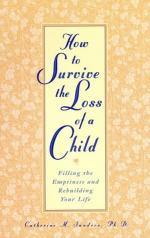|
This section contains 2,857 words (approx. 10 pages at 300 words per page) |

|
Traditional Definition of Death
The processes of human life are sustained by many factors, but oxygen is key to life. Respiration and blood circulation provide the body's cells with the oxygen needed to perform their life functions. When an injury or a disease compromises respiration or circulation, a breakdown in the oxygen supply occurs. As a result, the cells, deprived of essential life-sustaining oxygen, deteriorate. Using these criteria, defining death was once quite simple—a person was considered dead once he or she stopped breathing or was without a detectable heartbeat.
A New Criterion for Death
Advances in medical science have complicated the definition of death. Life-saving measures such as cardiopulmonary resuscitation (CPR) or defibrillation (electrical shock) can restart cardiac activity. The development of the mechanical respirator in the 1950s also prompted a change in the concept of death. An unconscious patient, unable to breathe without...
|
This section contains 2,857 words (approx. 10 pages at 300 words per page) |

|


